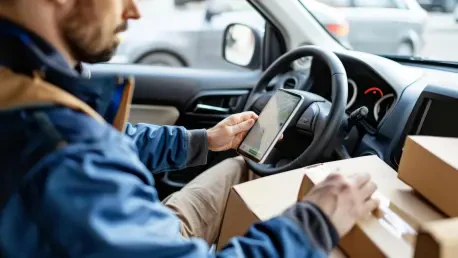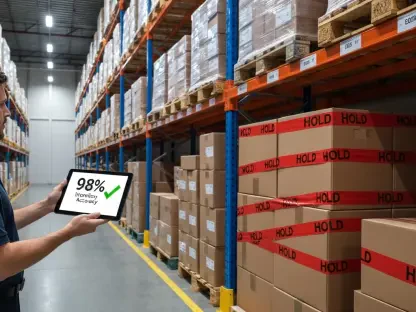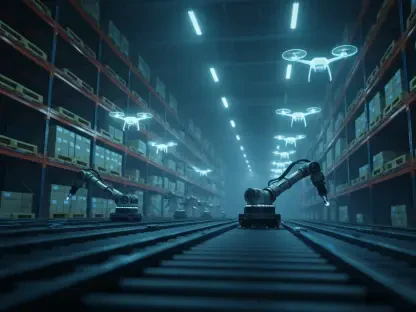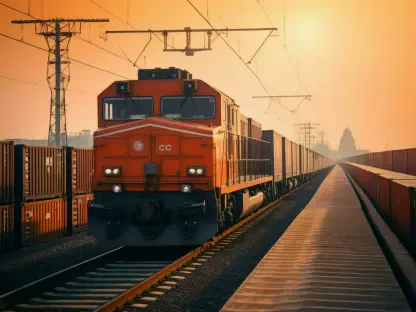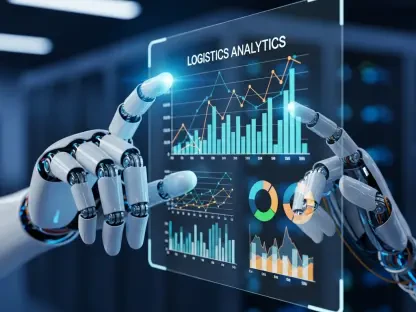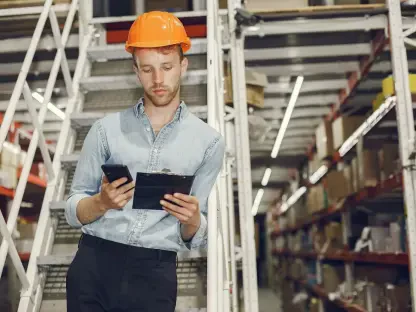Navigating the intricate dynamics of the logistics industry, Rohit Laila stands out as an exceptional expert with decades of experience under his belt. Having worked across various sectors, including supply chain and delivery, his insights into the ever-evolving landscape of logistics are invaluable. Today, we delve into the heart of one of the industry’s greatest challenges: last-mile delivery—a realm where technology and innovation are reshaping expectations, costs, and strategies.
Why is last-mile delivery considered the gritty battleground of logistics?
Last-mile delivery really is the grit and grind of logistics. It’s in this final segment that the real test of a company’s efficiency and reliability takes place. The chaos comes from navigating traffic, meeting tight deadlines, and dealing with the unpredictability of urban landscapes. Mistakes at this stage can significantly impact consumer satisfaction and brand reputation, hence why it’s a battleground without room for error.
How have consumer expectations evolved in recent years, particularly regarding last-mile delivery?
Consumer expectations have undergone a dramatic shift, largely driven by companies like Amazon that offer same-day deliveries. The ‘now’ culture means customers expect almost instant fulfillment of their orders, which forces logistics companies to constantly enhance their delivery speeds to compete. It’s a race to meet these expectations without compromising on quality.
What impact has Amazon Prime’s introduction of same-day delivery had on consumer expectations and logistics companies?
Amazon Prime’s same-day delivery service set a benchmark that reshaped the landscape of customer expectations. Consumers now view rapid delivery as a standard offering rather than a premium service. Logistics companies have had to evolve quickly to meet this new norm, investing in technology and resources to streamline their operations and ensure faster turnaround times.
What are the factors contributing to the rise in operational costs for last-mile delivery?
Operational costs have skyrocketed due to several factors. The most significant contributors are increasing fuel prices, higher labor costs, and the financial strain from recent tariffs. Urban congestion also plays a role, causing inefficiency in time and resource utilization. Technology investments further add to these costs, although they are necessary for meeting consumer demands.
How have recent tariffs impacted logistics providers’ costs and operations?
Tariffs have dramatically affected logistics providers by increasing the cost of imported goods, including vehicle parts and packaging materials. This has led to a ripple effect of higher operational expenses. Many companies have had to reevaluate their procurement strategies and seek alternatives to mitigate these increased costs while staying competitive.
What challenges do logistics companies face in congested urban areas like NYC or LA?
Cities like New York and Los Angeles are notorious for their traffic congestion, which presents notable challenges to efficient last-mile deliveries. The unpredictability of traffic patterns makes it hard for logistics providers to maintain consistent delivery times. Add in the complex navigation around these metropolises, and you’ve got a recipe for delays, which can negatively impact customer satisfaction.
How important is real-time visibility for consumers when tracking their packages?
Real-time visibility is crucial. In today’s market, where 91% of consumers track their orders, the ability to provide accurate updates is vital for maintaining trust and enhancing customer experience. It’s not just about providing a service; it’s about giving consumers peace of mind that their purchases are en route and will arrive on time.
Can you tell us about the technologies or strategies logistics companies use to improve route optimization?
Emerging technologies like AI-driven route optimization and predictive analytics are game-changers. These tools help companies map out the most efficient routes, reducing delays and fuel consumption significantly. Companies like UPS utilize systems like ORION to continuously adjust and fine-tune routes, ensuring maximum efficiency and cost-effectiveness.
What are the main challenges associated with returns in last-mile delivery, and how do they affect logistics operations?
Returns are a costly challenge in logistics. They require just as much precision and effort as initial deliveries but often come unexpectedly. Coordinating reverse logistics puts additional strain on resources, complicates scheduling, and can disrupt operational flow. Proper management of returns is essential to maintaining efficiency and controlling costs.
How do specialized materials and regulatory compliance play a role in last-mile delivery, especially for goods like refrigerated items or hazardous chemicals?
Handling specialized materials requires stringent compliance with safety standards and protocols. For goods like refrigerated items or hazardous chemicals, logistics providers must use specific transportation modes and adhere to regulatory guidelines, impacting their operational strategies and requiring frequent adaptations to ensure safe and lawful deliveries.
What kind of regulatory changes are impacting logistics providers, particularly concerning safety standards and material handling protocols?
Recent regulatory shifts, especially regarding safety and handling protocols, necessitate logistics providers to stay updated and adjust operations swiftly. These changes often mean retraining staff and redesigning processes to remain compliant, which can be costly and time-intensive but essential for legal adherence and ensuring safety.
Why is sustainability becoming increasingly important in the logistics industry, and what steps are companies taking to address this?
Sustainability is now central to logistics due to growing consumer demand for environmentally friendly practices and regulatory pressures. Companies are investing in electric fleets and optimizing packaging to reduce their carbon footprint. The shift encourages innovation and requires significant investment but is crucial for long-term viability and consumer trust.
What impact can poor last-mile delivery experiences have on a brand’s reputation?
Poor last-mile delivery experiences can severely affect a brand’s reputation. In a world where 70% of consumers may share their grievances online, a single mistake can lead to a significant drop in customer loyalty and sales. Brands need to ensure every delivery meets or exceeds expectations to maintain their reputation.
How critical is last-mile delivery execution in maintaining customer loyalty and brand reputation?
Execution in last-mile delivery is pivotal. It’s often the only tangible interaction a customer will have with a company’s logistics operations. Success in this area builds trust and repeat business, whereas failures can quickly erode reputation and customer loyalty. Meeting delivery promises is essential for customer satisfaction and long-term brand success.
How does optimizing last-mile efficiency contribute to profitability?
Optimizing last-mile efficiency directly contributes to profitability by reducing costs associated with fuel, labor, and vehicle maintenance. With precise route planning and resource allocation, logistics companies can save significantly and improve service delivery, making it a strategic move towards enhanced performance and customer retention.
Can you explain the role of technology, like AI-driven route optimization and predictive analytics, in overcoming last-mile delivery challenges?
Technology, particularly AI and predictive analytics, plays a crucial role in overcoming last-mile delivery challenges by enhancing decision-making processes. These technologies allow for better route planning and offer insights into traffic patterns, enabling companies to react swiftly to unforeseen circumstances, thus ensuring timely and efficient deliveries.
How have companies like Walmart used technology to maintain a competitive edge in last-mile logistics?
Walmart has leveraged technology by integrating intelligent algorithms and real-time tracking applications into their systems. With strategic acquisitions and tech innovations, they’ve managed to enhance efficiency and maintain a solid competitive edge. Their focus on adaptive technologies showcases the importance of tech in meeting high consumer expectations.
What advice would you give to logistics veterans looking to master last-mile challenges in today’s environment?
Embrace technology wholeheartedly. Staying ahead in last-mile delivery requires constant innovation, so invest in tech tools and solutions that optimize operations. Stay informed on regulatory changes and customer expectations, and prioritize sustainability not just as a trend, but as a core aspect of your strategic approach.
